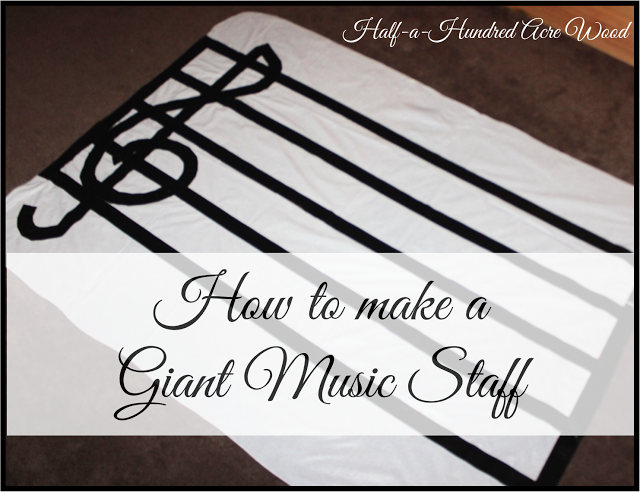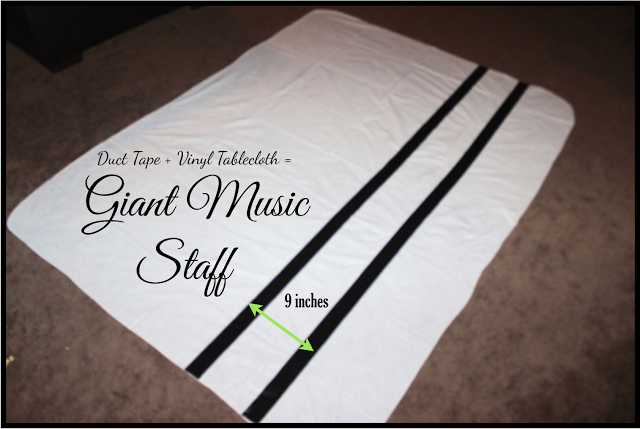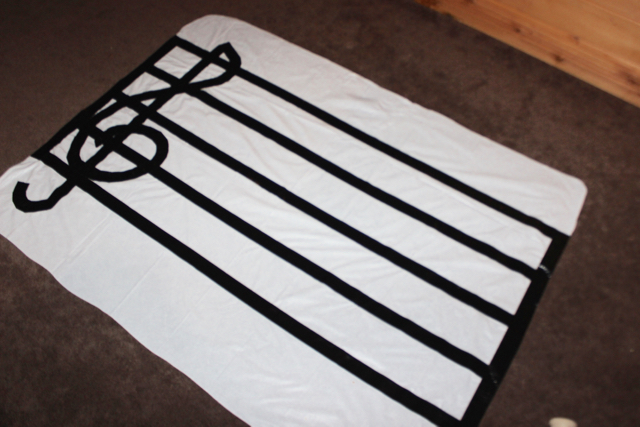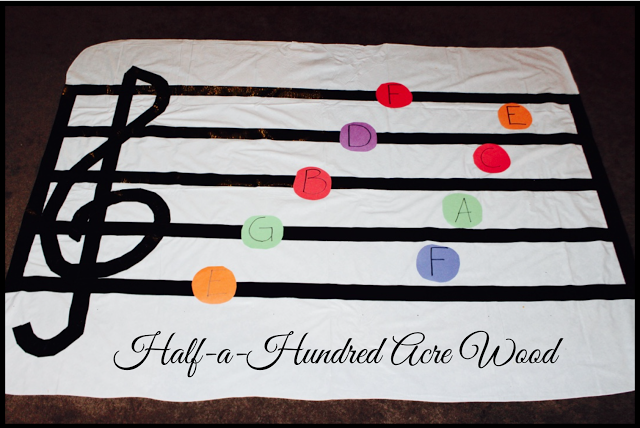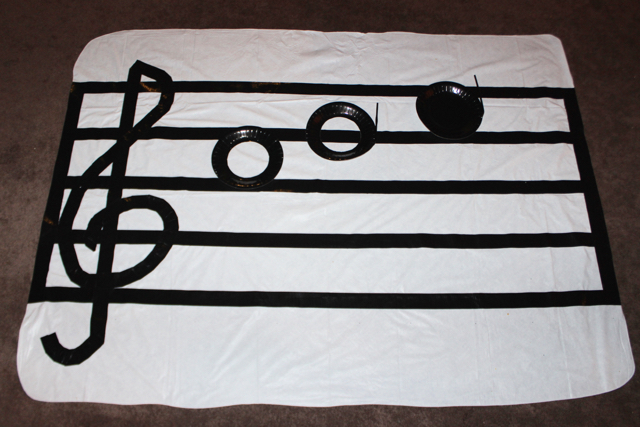Well, I guess we can add this to the list of things I never would have thought to do had it not been for our classical homeschool group – and those precious 4 and 5 year olds who are too cute (and quite perplexing) when being introduced to music theory.
For years now our community has had a gigantic music staff, but this year found us in need of a new one. So… equipped with a roll of black duct tape, a 52″x70″ vinyl tablecloth, a marker, and a ruler, I ventured to make a new duct tape creation…
The clear-as-mud method of making a gigantic music staff:
- Measure 11 inches from the bottom of the tablecloth and mark several spots as a guideline for the bottom staff line.
- Align the bottom of the duct tape along these marks for the bottom line of the staff.
- Measure 9 inches from the bottom edge of this first line of duct tape to mark a place to align the top edge of the next line of duct tape (as shown in the above photo by the green arrow).
- Continue until you have five lines of duct tape.
- After you have the five lines and four spaces that make up the music staff, tape a vertical bar line to each edge to hold the tape in place.
To make the treble clef, refer to a picture of a treble clef and use a bajillion (or maybe just 50) smaller pieces of duct tape. My favorite way to draw a treble clef is to start at the bottom to make the letter “J” and then come straight up to make the letter “P” and then circle around to make a curvy letter “G” or a number “6.”
On second thought, after reading back over my instructions, I’m not so sure this was all that helpful. But, at least I have some pictures here that show the idea?
You can make paper-plate, cardstock, or construction paper note-name (letter) labels and note symbols to introduce music theory to younger students. (Pictured below are a whole note, half note, and quarter note made of paper plates and straw flags).
During review, we have students stand on the spaces and lines to represent the note names. You can even use a bean bag to play games as you review the notes with your students – or have students play notes as you attempt to keep up with them by hopping from line to line or space to space on the staff.
Looking for more tin whistle and music theory ideas? Visit our page, Tin Whistle and Music Theory for boatloads of other resources!

